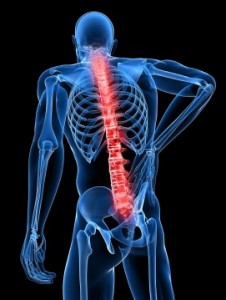Movement For Lower Back Soreness
It has been advocated that one of the best ways to prevent chronic lower back pain is through semi-vigorous exercises. A 12-week program is available for iPhone and iPad users and on DVD according to this article. These exercises are aimed at movement for lower back soreness of the knees and shoulders. Physical inactivity can only worsen the pain and lead to more complications, while these recommended exercises activate the small muscles to help the spine become more flexible. This program helps both the body and brain to combat the internal signals that are responsible for chronic pain.
Movement For Lower Back Soreness
Severe low back soreness usually comes on suddenly and can often be caused by a minor movement such as bending over.
For some people, working out can be a pain in the neck. Literally. Or maybe a pain in the lower back. And for that reason, they put a kibosh on kickboxing class and skip soccer practice. Assuming there is no acute injury – such as a fracture or strain – pain of the ongoing, nagging variety can present one of the biggest obstacles to maintaining physical fitness.
But a recently launched multimedia program proposes that the only way to reduce – and even prevent – chronic pain and injury is by moving the body more, not less.
Developed in Toronto by a team of medical, health and fitness professionals, Functional Progressive Rehabilitation is aimed at those who suffer from aches and pains, introducing exercises that will get them on track to Feeling Pretty Remarkable (the program’s in-house nickname).
Currently, FPR consists of a recommended 12-week lower-back series that’s available in a mobile application for iPhone and iPad or on DVD. Three more programs – focusing on knees, shoulders and motherhood – will be available this fall.
Chiropractor Kevin Jardine, the co-owner and president of Collaborans, the health care and fitness education company behind FPR, is adamant that certain exercises – based on evidence-based research – allow the body to combat chronic pain. The alternative – avoiding activity – can be self-destructive, he says.
“I equate physical inactivity with a disease entity in and of itself, called the deconditioning disease,” he explains. “Basically, our bodies are rotting and rusting to a point that they cannot function well and they start to deteriorate.”
FPR trains both body and brain to reverse the internal signals that contribute to chronic pain, which he describes as “an echo left on the nervous system, even though there’s often no tissue damage occurring.”
FPR is no-nonsense and refreshing in its set-up, and eschews the splashy, sexy, annoying visuals that are ubiquitous in home-workout DVDs.
There is no faux warehouse backdrop, no perma-smiling entourage and no celebrity trainer yelling peppy feedback into a headset.
Instead, physical therapist Chris Nentarz explains each exercise (demonstrated by a man or a woman) as if he’s right beside you, reminding you each time to bring your belly button to the floor.
The exercises are challenging and require a mental checklist to achieve proper form.
A large portion of the program, divided into Limber, Load and Lengthen sections, draws from Pilates; core stability, or “abdominal bracing” as it’s called in FPR, is integral to the program.
Dr. Jardine points out that the goal is to engage and control the small muscles – microactivation – to help the spine move properly. He says these motor-control exercises are the equivalent to developing a skill versus simply performing a range of movements.
Each of the four phases (users advance one level every three weeks, hence the “progressive”) can be completed in 20 minutes.
Gregory Heath, a professor of health and human performance at the University of Tennessee at Chattanooga, commends FPR’s rehabilitative approach.
By simply performing some motor-controlled exercises, you can increase your chances of staying away from chronic lower back pain. The ultimate principle of this program is movement for lower back soreness through various exercises. These exercises relate to core stability, load and lengthen sections, limbering, and Pilates. A mental checklist is prepared before taking up these challenging workouts, which brings flexibility to the spine and rehabilitates both body and mind to negate the signals leading to chronic pain. This 12-week rehabilitative program can benefit those suffering from chronic lower back pain in a significant way, and has been recommended by physicians to be one of the best alternative therapies. You have nothing to lose apart from back pain by trying this method.
Clip from Erik Dalton’s Myoskeletal Alignment for Low Back, Hip and Leg Pain video. From ErickDalton.com
In this video Chiropractor Dr Maria Madge gives advice to The Sports Injury Clinic about how to relieve lower back pain.
You might also like:
Tags: movement for lower back soreness















